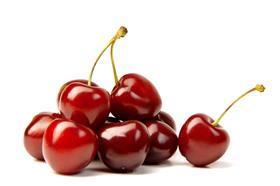
Despite the recent revival of the UK cherry industry – particularly in easier-to-pick dwarf varieties – the sector has had a rocky ride in the past 12 months.
Last year’s bad harvest and a significant decline in shopper frequency hit the industry hard, with cherries falling in all KPIs at British retailers in the 52 weeks to 22 May 2017, according to Kantar. A decline in frequency of purchase has removed £10.4m from the category, and sales have dropped from a peak of £128.7 million in the 52 weeks to 22 May 2016 to £107.1m in the past year – a return to below 2015 levels. On the plus side, Norton Folgate managing director Matt Hancock says this has been partly mitigated by the fact that the average weight of purchase has increased. “We have seen a significant increase in the rate of sale of the larger punnet formats in the last 18 months,” he says.
Hancock wants to get customers trading into 300-500g formats rather than buying in the 200-250g bracket. And the advent of 800g-1kg formats, sold during the summer months, has also driven down frequency of purchase figures, Hancock believes. “This is all positive news where we focus on selling decent tonnages of fruit rather than excess packaging,” he says.
The imminent UK season is expected to begin five to seven days ahead of normal, and 10 days ahead of last year, thanks to good weather conditions in recent months. A cold winter followed by “good sunlight at just the right time for the cherries to develop their size and flavour” was what caused this, says Berry Gardens chief executive Jacqui Green, who anticipates “plump, juicy high-quality fruit” – despite the frosts that hit growers in April.
“We are seeing some damage in certain areas, but generally it is limited and partially mitigated by what is a good-looking crop,” Hancock says. “We expect to be handling between 1,000 and 1,200 tonnes this season.”
In production, season extension remains a key focus of development work around the world, both in early and late growing regions. “We still have a big prize to gain as we try to close the 12-month supply gaps,” says Hancock, who predicts that new shading systems to better manage winter chill, higher elevations and locations to extend the season, and new latitudes on which to grow fruit will combine to help fill this gap.
To match these developments, it is important that retail sales pick up and the annual Seasonal Cherries campaign has proved influential in promoting consumption and awareness of the product.
The campaign has been extended this year to include imported cherries, and PR agency The Red Brick Road will be hoping to emulate the success of its year-round Seasonal Berries campaign, which promotes product grown in Britain’s import markets as well as domestically.



